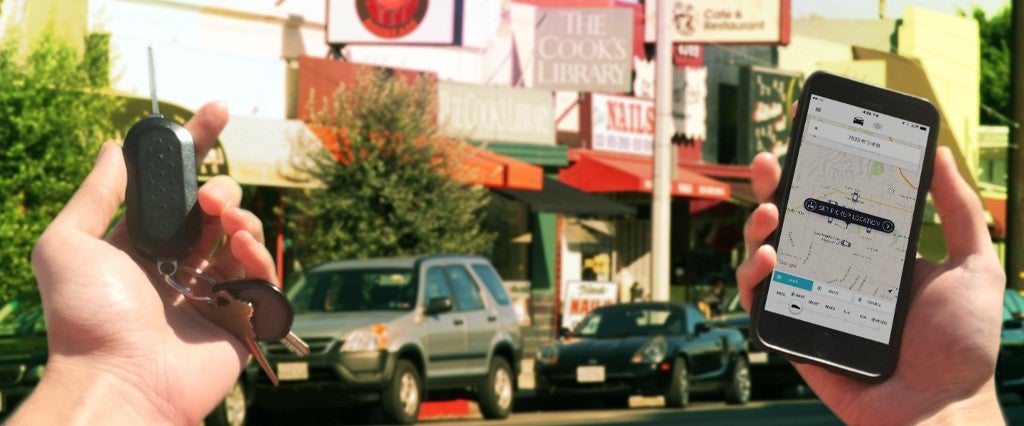Sharing, once just the cornerstone of kindergarten curriculums, is now the theoretical basis for the most exciting sub-sector in venture-backed technology. Leading the “sharing economy” is, of course, Uber, the startup that has achieved a $50 billion valuation by exploiting the underemployed for their labor and resources and brazenly flouting the law. Kidding! (Kind of.)
While Uber has been fairly criticized for ignoring municipal regulations and creating a new working class of on-demand chauffeurs for the betterment of the better off, it also has brought distinct financial advantages to the buyers and sellers who use the service.
Namely, the opportunity for car owners to earn income from an otherwise depreciating resource. And by increasing the supply of drivers, the cost of transportation to the consumer decreases. Everybody wins. Q.E.D.
The logical extreme is a world in which it’s cheaper to use Uber to get around everywhere than it is to own a car. Once every car is Uber-ized (and, ultimately, automated), owning a car will be a luxury. At least that’s what Uber CEO Travis Kalanick believes (as he tweeted at New York Times reporter Mike Isaac last year):
@MikeIsaac our intention is to make @uber so efficient, cars so highly utilized that for most people it is cheaper than owning a car
— travis kalanick (@travisk) February 7, 2015
Running counter to all of this is that auto sales are actually increasing. The auto industry was projected to sell 16.9 million units in 2015, a 2.5 percent jump from 2014 and the highest overall total since 2005.
So how far are we from Kalanick’s auto-utopia? An examination, by the numbers:
The hypothetical “average” user
Here’s the cost breakdown of exclusively using Uber, based on an average fare of $11 in Chicago. Yes, you can share rides at a discount, but there’s also unpredictable surge pricing which tends to even things out.
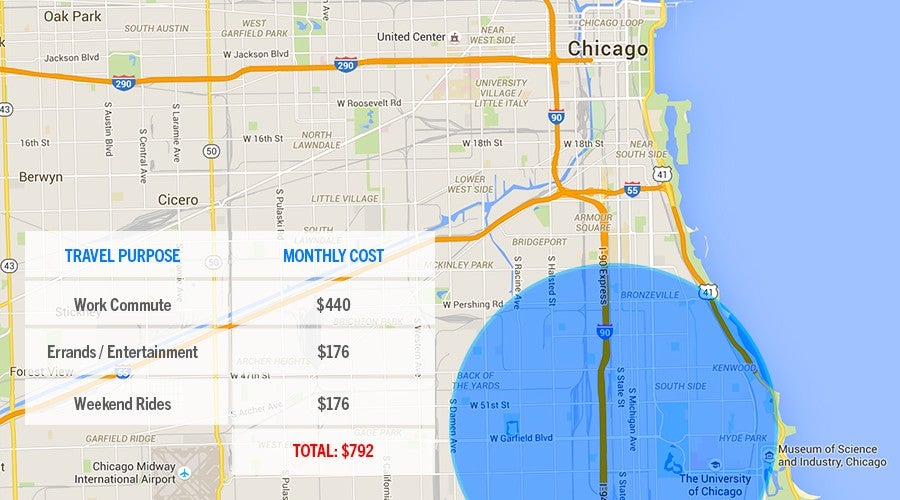
That’s $159 more per month than than the average monthly payment on a new car: $633 (including interest and insurance), according to AutoBlog.
But to be fair, that was all hypothetical. What about actual Uber users?
We interviewed three L.A. Uber users of varying intensities about their average Uber costs. (Note: These are L.A. rates, so arguably a bit higher than other cities.)
Light user: Jonathan (Los Feliz)
As someone who works from home, Jonathan uses Uber occasionally to go to work and to run errands during the week, and lightly on weekends.
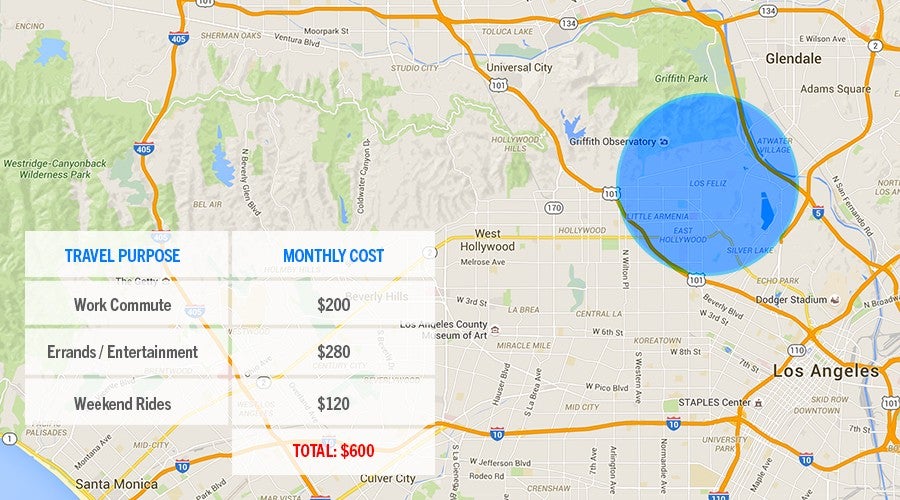
Medium user: “Heather” (Studio City)
At 23, Heather has never owned a car and is committed to the cause (and cost) of a car-less life.
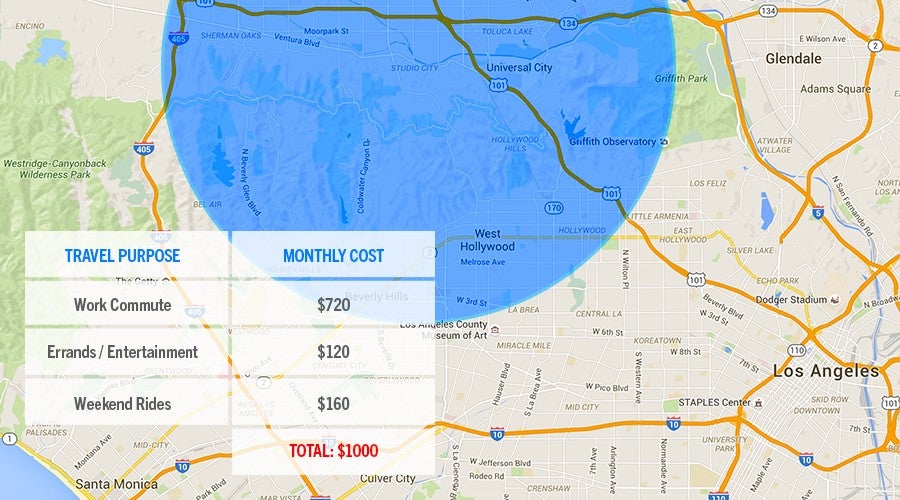
Heavy user: Ryan (West Hollywood)
Ryan takes Uber everywhere: to work, to the gym, to dinner every night and then out afterwards. He takes approximately eight Uber rides a weekend at an average of $12 per ride, and he hung his head in shame when admitting to spending $250 on entertainment-related Ubers each week.
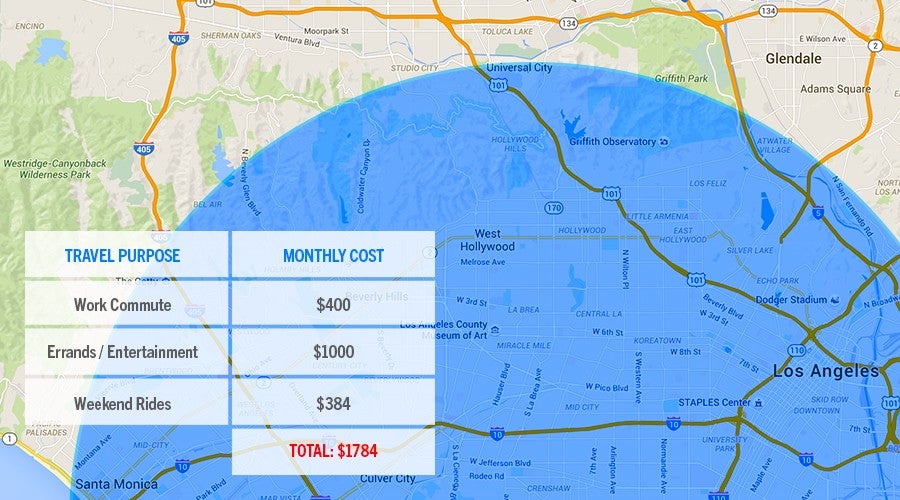
The main takeaway? Unless you’re a light user who can walk or bike to work and has a social life less vibrant than Ryan’s, it’s more cost-efficient to buy a car. If you’re willing to get a used car, your savings would be even greater.
And consider that not everyone lives in a city. While Uber is currently in more than 100 cities in the U.S., if you’re one of the 19.3 percent of Americans who don’t live in urban areas? No dice.
Driverless cars will almost certainly change this calculus, though.
This will radically change once self-driving cars become ubiquitous on our roadways, which Google predicts is only five years away.
Much of the cost of taking an Uber is due to the labor (that is, the driver). Driverless Ubers would be unencumbered from that labor cost and thus cheaper to consumers.
“When there’s no other dude in the car, the cost of taking an Uber anywhere becomes cheaper than owning a vehicle,” Kalanick said last May. “So the magic there is, you basically bring the cost below the cost of ownership for everybody, and then car ownership goes away.”
Until then, happy driving.
